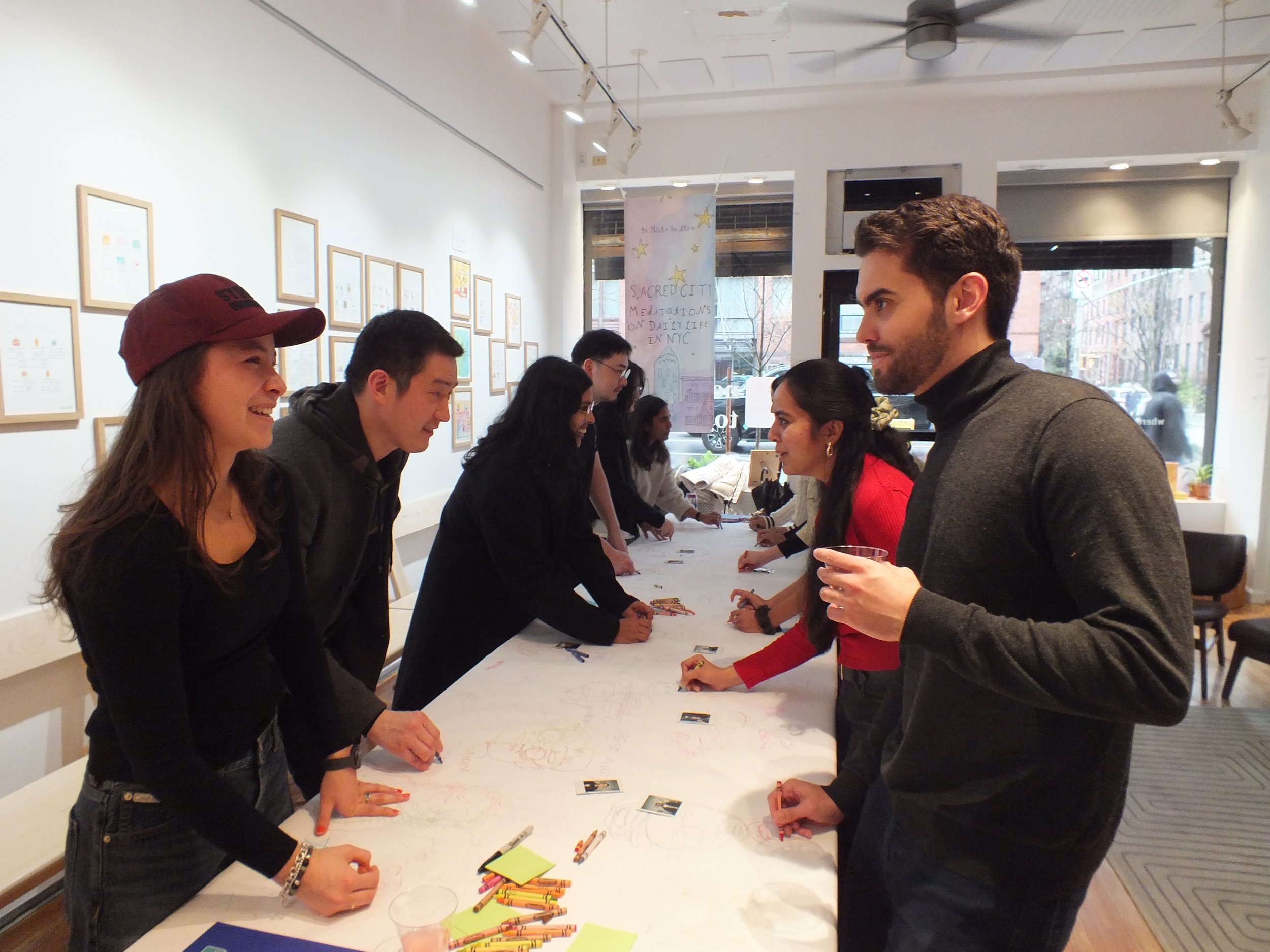Longing For Belonging: Rediscovering Community Through Third Places
Prerna Sharma’s thesis, Longing for Belonging: Rediscovering Community Through Third Places, looks into the ongoing epidemic of loneliness and how “Third Places” are an essential tool to help combat this issue. In today’s fast-paced urban world, amidst the chaos of daily routines and an ever-growing digital existence, there exists a yearning for connection and a sense of belonging. It is a longing that is innate to human beings, rooted in the essence of survival as a species—and yet, loneliness persists.
“The physical health consequences of poor or insufficient connection include a 29% increased risk of heart disease, a 32% increased risk of stroke, and a 50% increased risk of developing dementia for older adults. Additionally, lacking social connection increases risk of premature death by more than 60%.”
- Dr Vivek Murthy, Surgeon General of the United States
“Third Places” is a term coined by sociologist Ray Oldenburg and refers to places where people spend time between home ('first' place) and work ('second' place).” However, Third Places are much more than just physical locations. They are spaces where individuals exchange ideas, have a good time, and build relationships—where interactions thrive. They serve as crucial locations where people can simply be, without the pressure of productivity.
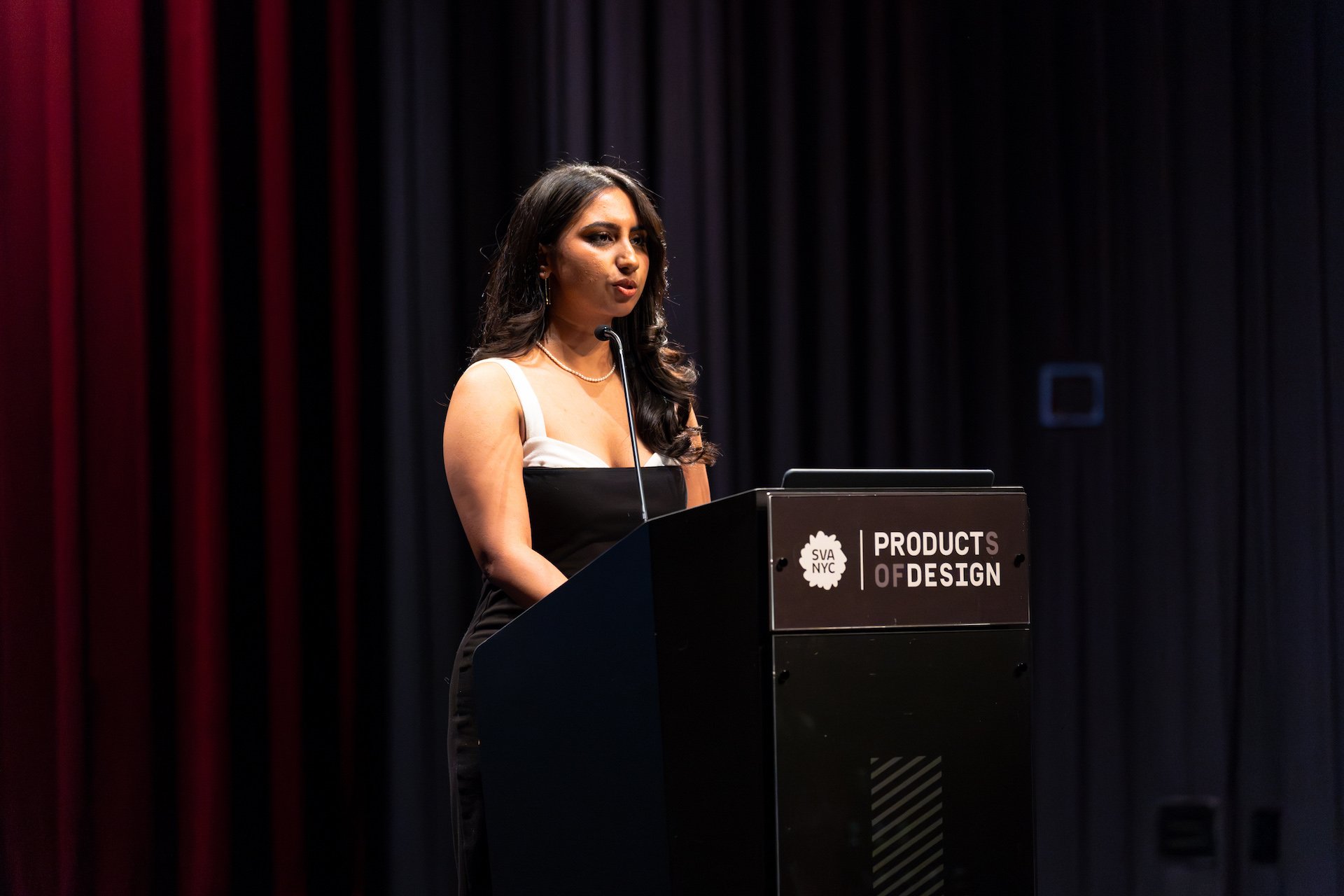
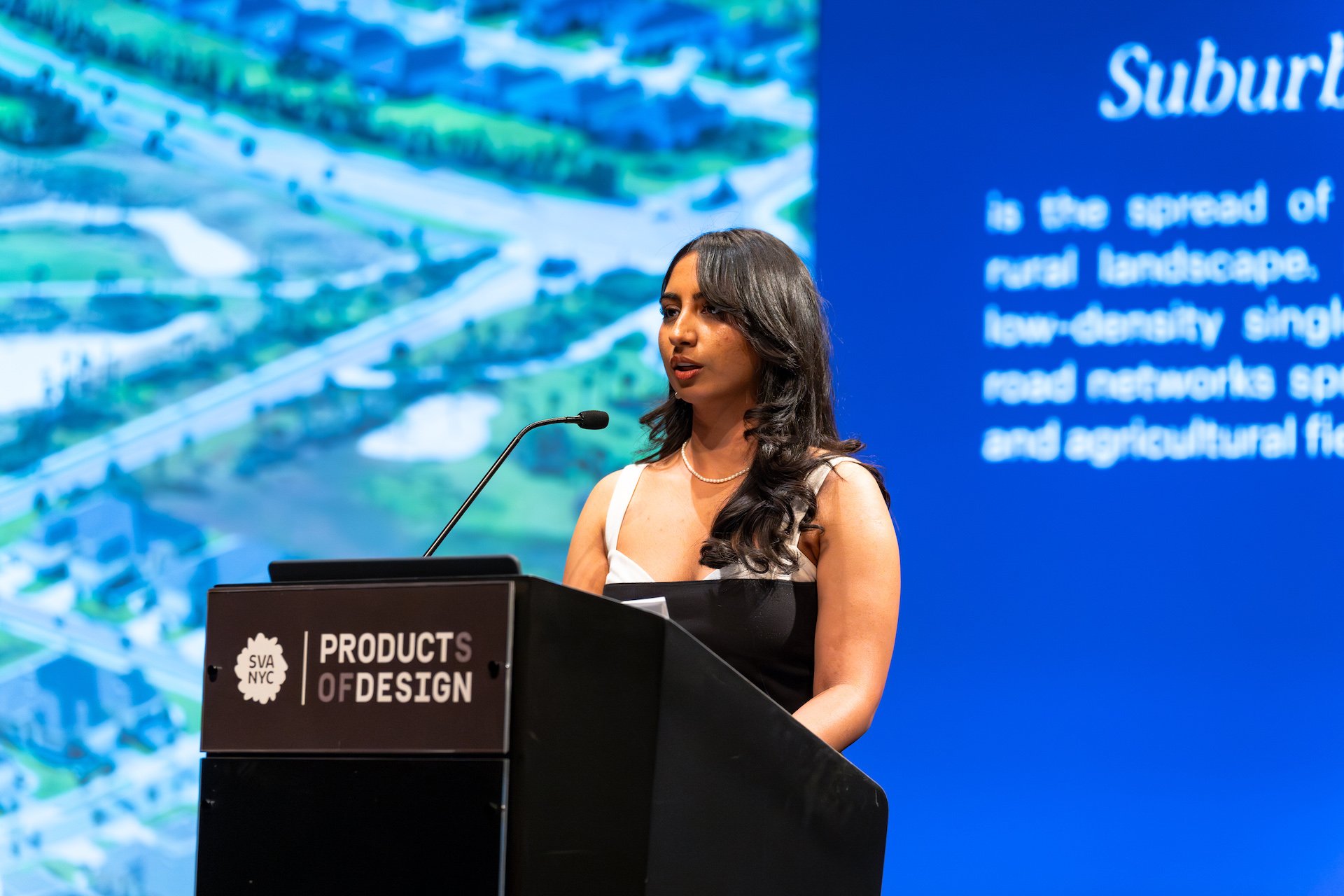

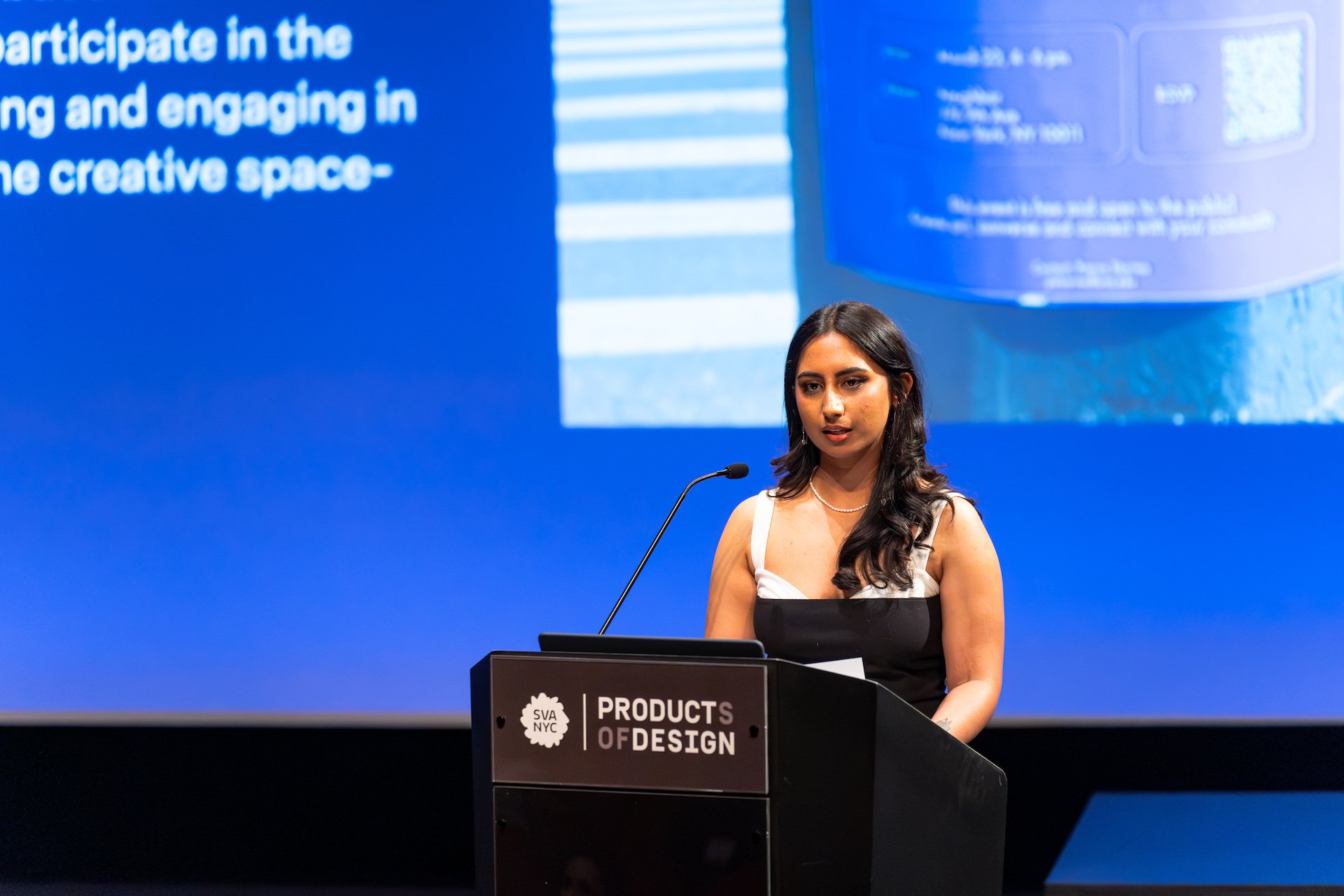
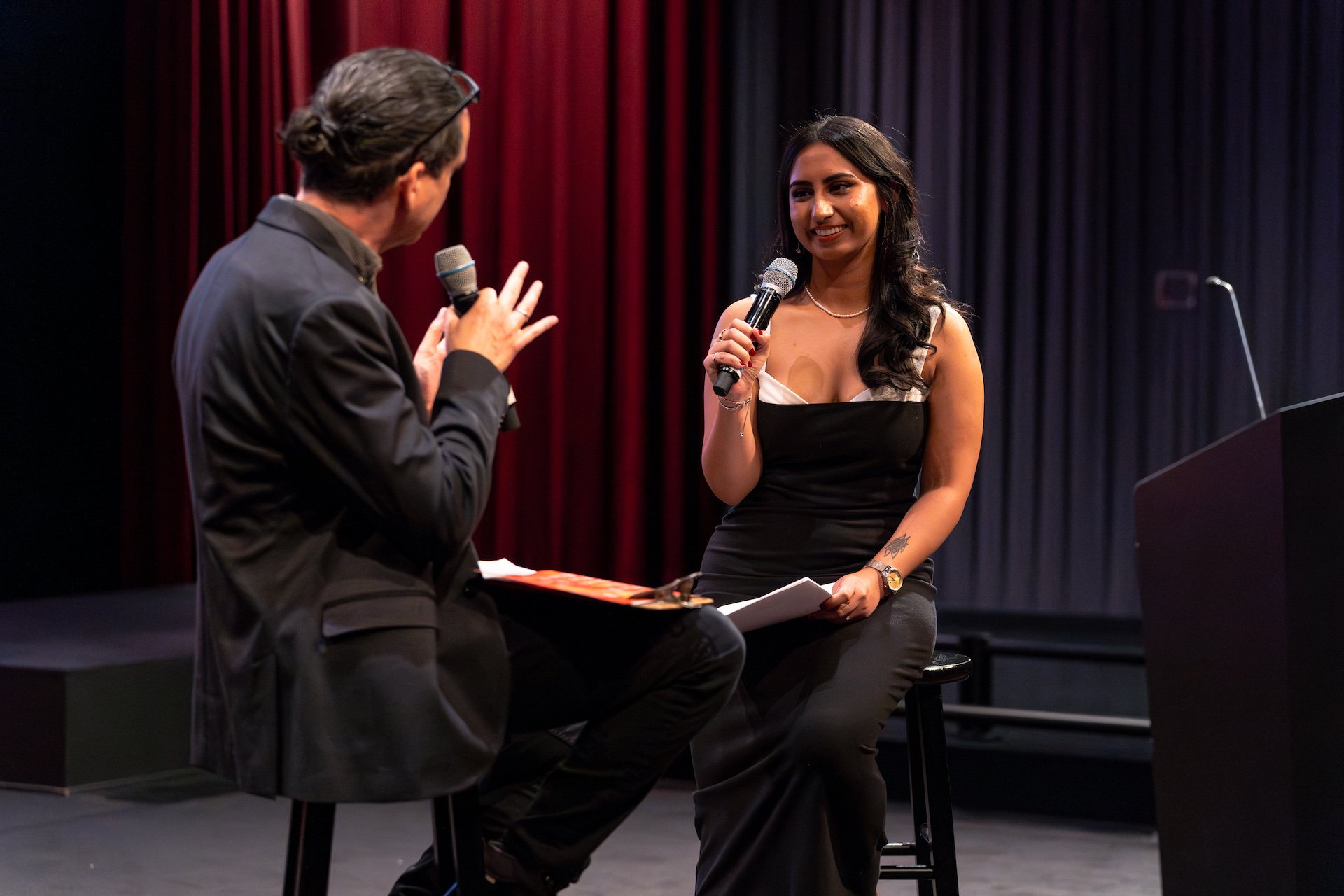

Essential to the fabric of society and overall well-being, Third Places are sometimes overlooked in modern urban planning. The transformation of these spaces, accelerated by societal shifts and technological advancements, has led them to become more geared towards productivity. However, amidst the solitary clicks of keyboards in once bustling cafes, there remains a longing for genuine human connection. In response to this existential challenge, innovation becomes imperative. Prerna’s thesis stands as a testament to the enduring power of connection and central to this research is the exploration of how design can facilitate connections through non-productive socializing.
Drawing inspiration from the Surgeon General's advisory on the Healing Effects of Social Connections and Community, Prerna structured her thesis products and services around their pillars to address the current epidemic of loneliness. Initially, she approached the problem holistically, believing that designing new third places and their architecture could offer solutions. To explore this concept, she developed prototypes of modular public seating structures that enable users to rearrange and activate space as needed.
A Brief Conversation
To confront the issue of hostile architecture in public spaces that are specifically designed to deter lingering, Prerna created A Brief Conversation, a compact seat that folds out of a briefcase for when you’re on the go. Ideal for any occasion, whether it's a first date, a picnic, a BYOB (Bring Your Own Bench) party, or even a business meeting, "A Brief Conversation" has you covered.
Crafted with convenience in mind, this portable seat ensures you're always prepared, offering both comfort and practicality wherever you go.
Coop
Coop is a community interaction point designed for preexisting third places that encourages people to pause and express gratitude through thoughtful prompts.Users are encouraged to take a note and leave one, creating a low-stakes process that helps people reflect on how their community enriches their lives.
“I need the people in this neighborhood, I need them or I won’t survive.”
—David Plant, Pastor and Founder of Neighbor Community Space
Coop offers ready-to-assemble kits for an easy setup or downloadable files to DIY. Additionally, the design can be custom-made to represent your neighborhood. The prompts are changed weekly by the storeowners—for example: “What's your go-to dish at the local restaurants?” or “Got a green thumb? Share your gardening tips or favorite plants.” Prerna created the following storyboard to give a sense of how Coop works:
Coop also maintains a newsletter and social media presence, spotlighting positive interactions for the community to see. As Prerna conducted research, she discovered the importance of sustained, continuous interactions in building relationships. This concept led her to explore the idea of Public Characters, a term coined by journalist and activist Jane Jacobs. She defines Public Characters as individuals who engage frequently with a wide circle of people, making themselves known within their communities.
Neighbor
Reflecting on the Public Characters in her own life, such as the pigeon man in the park and the guys at the bagel store, Prerna envisioned Neighbor, a community-centric app designed to foster connections among neighbors by recommending local events and meetups based on common interests.
Neighbor encourages community engagement, promotes face-to-face interactions, and supports local businesses through increased neighborhood spending.
The app starts by asking the user to create a personalized character profile that best represents them. Upon creating an account, users select their interests, write a bio, and specify their location.
Users can explore recommended events nearby and see other attendees' profiles. The app shows compatibility percentages and allows users to chat if they are attending the same event.
During the event, Neighbor encourages users to be present and in the moment by sending a push notification to turn on Do Not Disturb mode. Additionally, a meter illustrates users' impact on their neighborhood and community via the time spent interacting in person. Neighbor is committed to harnessing technology to bolster real-world connections that enrich local communities.
Align
Prerna explains that connections aren't limited to digital or physical spaces: “they can also be forged through shared experiences, such as fitness activities.” Team sports and group workouts play a pivotal role in nurturing bonds and trust among participants. While “group” exercise courses do exist, these are often done simply in the proximity of others, and not actively engaging with them.
Currently, most dedicated workout equipment is geared towards individual practice, and there are no products in the market that exist for communal exercise. This realization inspired Prerna to create Align, a health and wellness brand aimed at bridging this gap and addressing pillars 3 and 6 of the Surgeon General’s advisory.
Specializing in communal workout equipment tailored for shared yoga experiences, Align empowers people to strengthen connections and build trust through synchronized practice.
People & Places
Finally, Prerna embarked on the culmination of her thesis journey, driven by the core purpose that led her to this topic: to rediscover community in third places. This took shape through her event series titled People & Places. The aim of People & Places was to unite young artists, designers, and creatives in a spontaneous collaborative art project. The vision for the event was to cultivate an energetic, playful, and connective atmosphere.
People & Places consisted of two activities, the first being a communal art piece which was created by the participants through a blind drawing exercise, in which they had to draw the portrait of the person in front of them without looking at the paper below. The second part aimed at getting insight on the question of “What does community mean to you?” Participants were encouraged to write/sketch/visualize their thoughts and create a collection of post-it notes based on the prompts provided.
“The event was a great success and the participants stated that they really enjoyed meeting new people through this,” Prerna shares. “The blind drawing activity, although a bit nerve-wracking at first, served as a clever icebreaker that encouraged eye contact and conversation.”
Throughout this past year, Prerna’s research has led her on unexpected paths, guided by serendipitous encounters within her community. Engaging in spontaneous interviews with individuals from diverse backgrounds and professions she discovered that they all have a shared commitment to enriching their community. Each individual she encountered has offered a unique perspective on community building, whether through food, music, design, spirituality, entrepreneurship, or governance, enriching her understanding of its multifaceted nature.
Prerna’s thesis journey stands as a testament to the transformative power of community, reaffirming her belief in the boundless potential of human connection to shape a better world. Prerna hopes that together, we can create a future where every individual feels seen, heard, and valued.
To learn more about Prerna Sharma’s work, take a look at her projects in more detail at: www.prernasharmadesign.com.


























